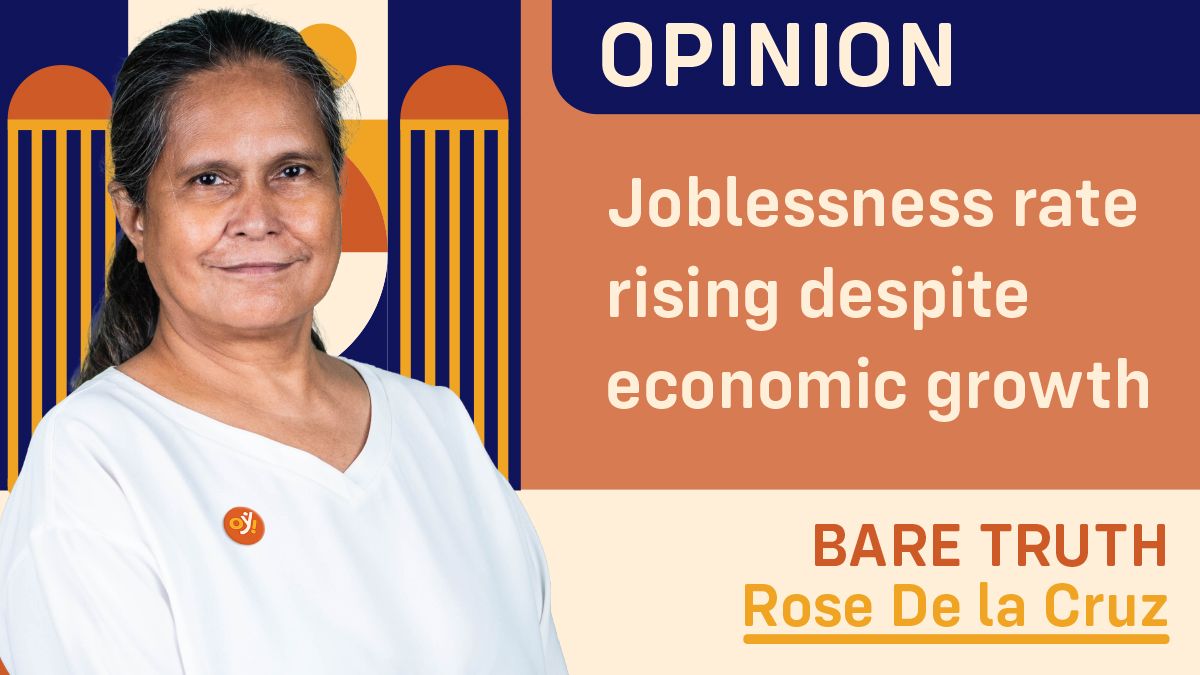No doubt the economy is growing– even faster than in most parts of the globe. But so, too, is the rate of joblessness, especially from new graduates who are entering the labor force. And unless they are trained in new skills, the job entrants would even lose out to AI robots.
The rising joblessness rate was divulged to Business World by Sonny Matula, president of the Federation of Free Works recently as he described the problem as “concerning” especially for the new entrants to the workforce as “it reflects the challenges our economy continues to face despite recovery efforts.”
“The increase in joblessness is a signal that more needs to be done to create sustainable and decent jobs. Structural issues in our economy, such as mismatched skills, limited job opportunities in certain sectors, and ongoing inflationary pressures, are contributing factors,” Matula said.
Rising joblessness shows the need for immediate relief measures and long-term reforms to address the root causes of unemployment, he added.
Assistant Prof. Benjamin Velasco of UP Diliman School of Labor and Industrial Relations added that the country’s low labor force participation rate (LFPR) also shows that the government must do more to provide more jobs for its working-age population. The LFPR declined to 63.5 percent in July from 66 percent in June.
He said with the private sector unable to provide quality jobs, the government must step in, through a jobs guarantee program for meaningful, quality jobs in sectors that the private sector does not find profitable such as climate mitigation, reforestation or river cleanup.
Director General Jose Francisco Benitez of TESDA said addressing the education crisis is key to reaping the potential benefits of the country’s demographic transition. “We should bridge them (workforce entrants) to a better pathway. The demographic dividend is real, but with the ongoing education crisis, it’s concerning. We really need to address it.”
TESDA claims to have a faster response time because its courses are shorter compared to CHED. So, TESDA should also quickly provide the right kind of programs and assistance, particularly in empowering the youth,” he added.
Matula expressed hopes about the government’s implementation of “Trabaho Para sa Bayan” plan, a 10-year employment roadmap, and the Green Jobs Act to boost the country’s job creation.
“The landscape of green jobs in the Philippines is expanding, driven by national policies and international cooperation aimed at promoting sustainable development,” he said.
He cited a TESDA study, which said the green job market is expected to generate about 5.10 million positions by next year, spanning sectors such as renewable energy, agriculture, waste management, and construction. The DOLE is actively conducting consultations and mapping projects to identify and promote green jobs in sectors like energy, manufacturing, and tourism.
The country’s unemployment rate rose to a one-year high of 4.7% in July as fresh graduates entered the workforce, the Philippine Statistics Authority (PSA) said.
Preliminary data from the PSA’s Labor Force Survey (LFS) showed the jobless rate picked up from a two-decade low of 3.1 percent in June and was the highest since the 4.9 percent last year. This translated to 2.38 million unemployed Filipinos in July, up by 755,000 from 1.62 million in June. Year on year, this went up by 86,000 from 2.29 million in July 2023.
#WeTakeAStand #OpinYon #OpinYonColumn #ColumnbyRosedelaCruz #BareTruth #PSA #LFS #TESDA #DOLE #CHED
